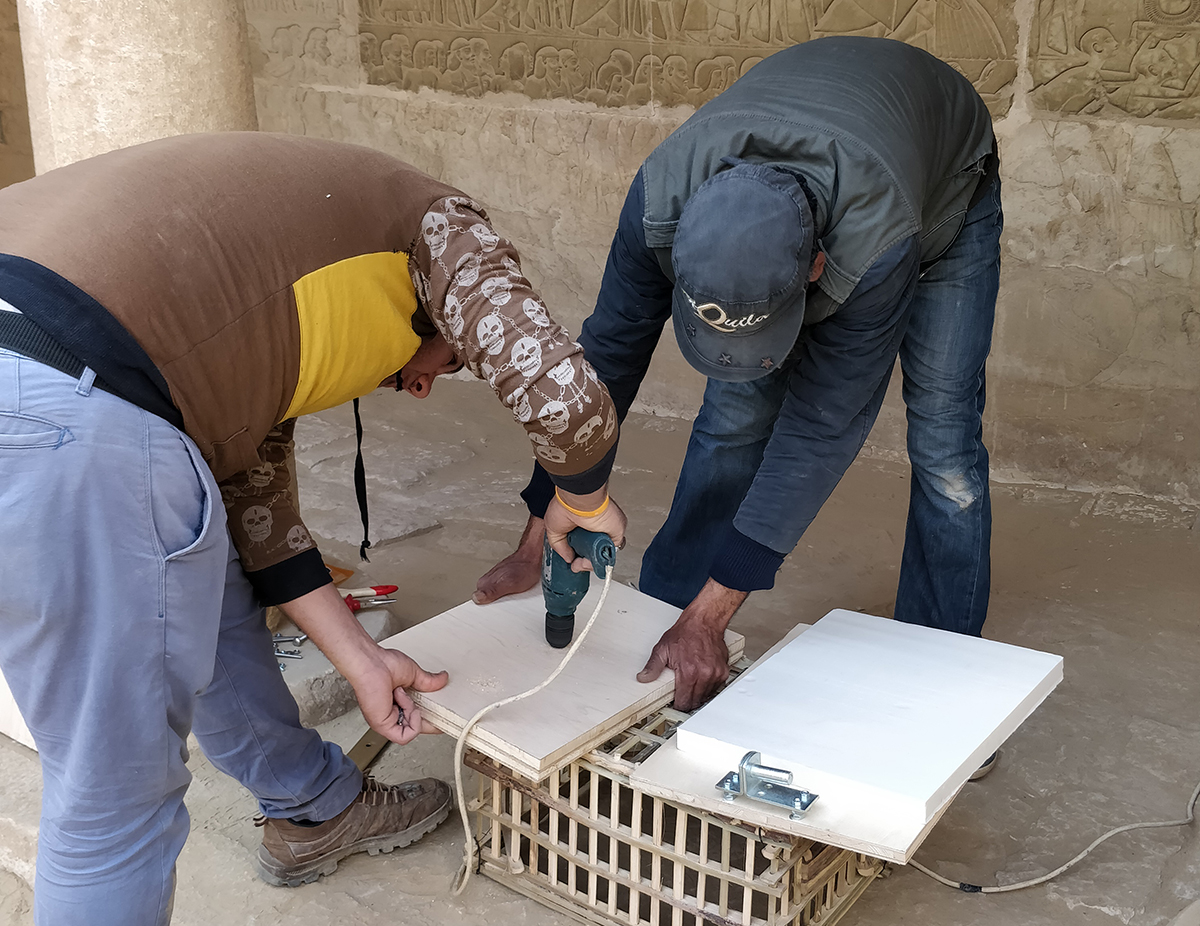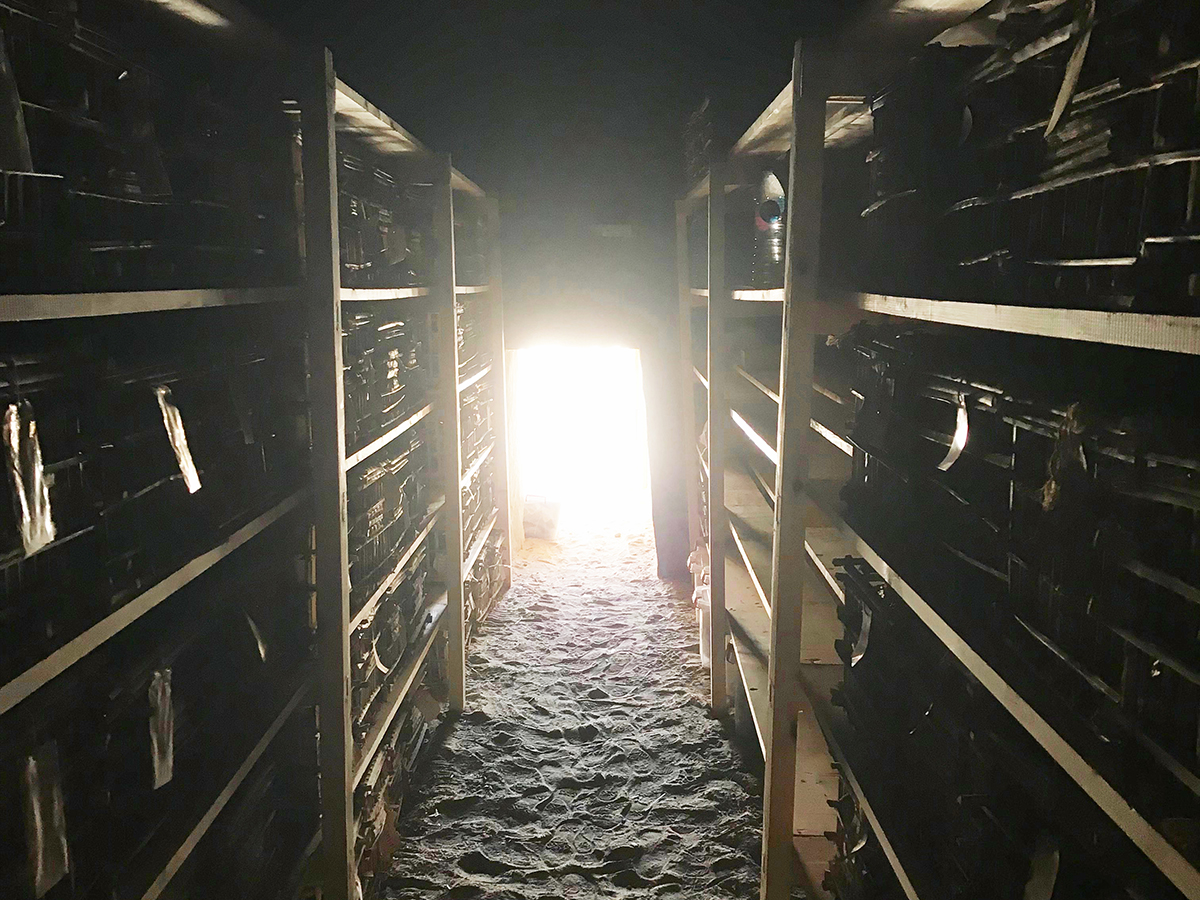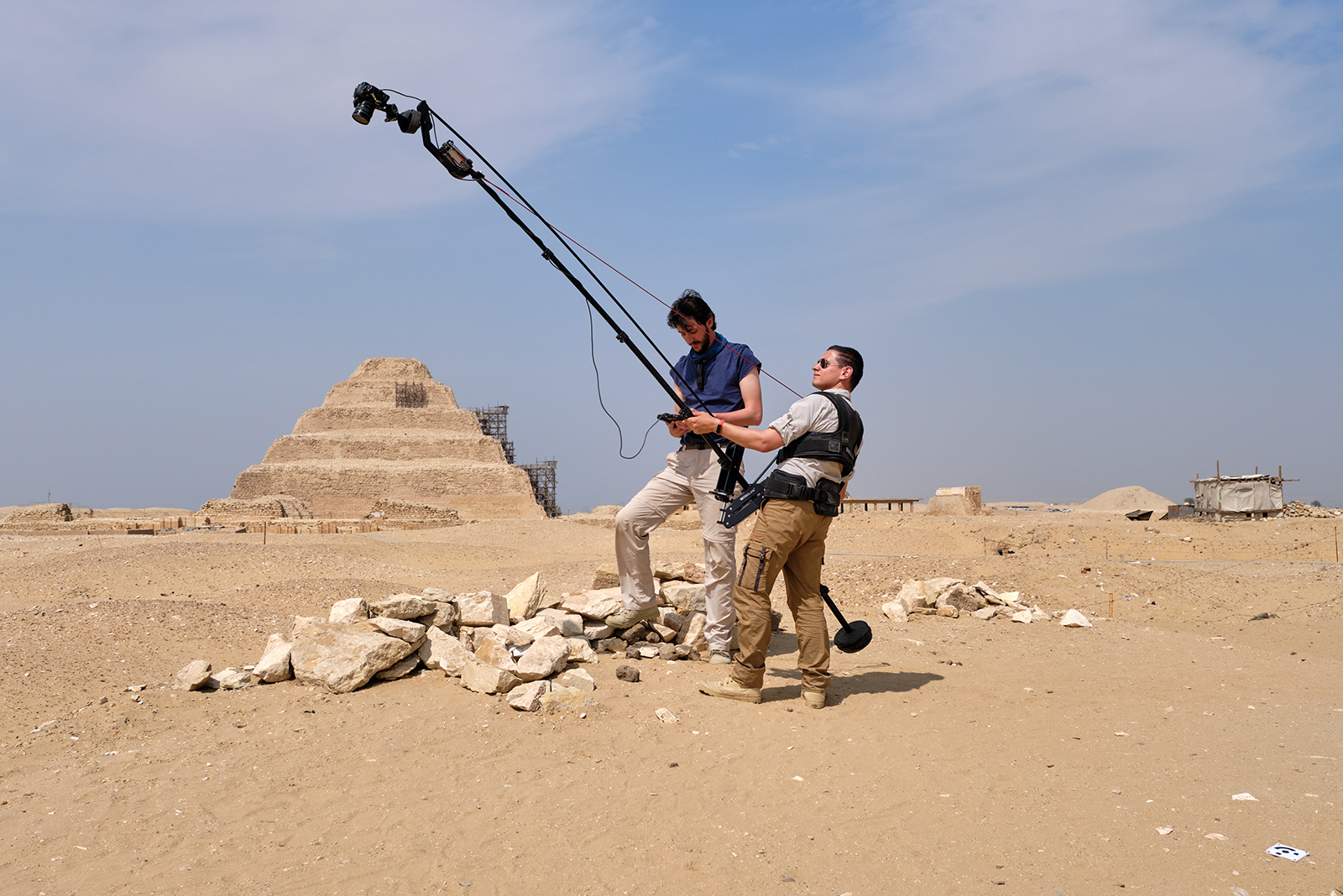This week was travel-intensive for the directors. There were many afternoon meetings in Cairo for our Transformation of the Egyptian Museum in Cairo project – in preparation of the upcoming big steering committee meeting by the end of the month. In addition, we visited the opening of the nice Tuna el-Gebel exhibition made by our German colleagues, and we celebrated Europe Day in the European embassy (a little earlier because of Ramadan). At the site we continued excavating the new tomb.
Hi everyone, Ali Jelene checking in for week 5. As with the previous two seasons, I’m responsible for the human remains at our site. From excavation to storage and everything in between! As we haven’t found any new burials yet, I’ve had some time to focus on other aspects of dealing with human remains from an archaeological context. You see, archaeology doesn’t stop once a burial (or an item, a find, an object…) is excavated. The act of excavating disturbs the materials that have been in a certain place for ages, and this shift in environment is often enough to disrupt the careful equilibrium that preserved the material in the state we excavate it in. In order to avoid further decay, we have to undertake adequate steps in the handling and storage of the materials we find. This sounds complicated, but if you know the materials you’re working with and what they require in terms of storage, it should be pretty straightforward.
In regards to human remains specifically, there is of course the ethical aspect. We are dealing with the remains of actual human beings, and while we don’t know any of their direct descendants currently alive today, we should still treat these remains with respect from the moment we excavated them all the way until we place them in the storage room.
This brings us to the topic of this week’s Digging Diary: storage. Once human remains have been analysed, they should be stored in a way that meets several goals. We want to treat them the way we ourselves would want to be treated, we don’t want them to decay further, all the while making sure that we keep them available for future research. Who knows what interesting new techniques might be discovered in the future, allowing us a better insight in the lives of ancient Egyptians. It is with this in mind that I’ve been spending the season optimising the storage situation on site. Let me give you a look into the process of how we’re currently doing it.
Once the analysis of a burial is finished, we first label every single bone by applying a thin layer of clear nail polish before writing the unique burial number on it. This is time-intensive labor, but should be done in case a bone is taken from the rest of the burial (for example for further analysis or the application of other techniques that we cannot do on site, like x-rays). With every bone labeled, it is easy to see at a glance which individual it belongs to.
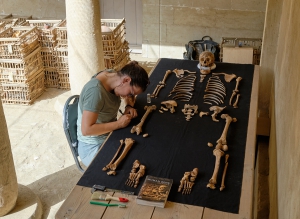
Carefully labelling each bone. Photo: Nicola Dell’Aquila.

Labeled vertebrae. Photo: Ali Jelene Scheers.
Once labeled, we store the bones in clear plastic bags that have been perforated. In order to do so, we’ve constructed a scary-looking device that allows us to puncture through several bags at once. The reason we punch these holes is because bones are an organic material that needs to be able to breathe. Storing them in airtight conditions will lead to mold, rapid decay, accumulation of moisture, and other things we really don’t want to happen.

Construction of the hole-punching device. Photo: Ali Jelene Scheers.

The finished hole-punching device. It currently goes by the name “torture device” but no worries, no one has been tortured with it… yet ? Photo: Ali Jelene Scheers.
Each perforated bag is then labeled with the unique burial number, the date and the contents, and is put together with the other bags belonging to the individual in a crate. This crate, too, is labeled, and the location it is stored is noted down in the storage magazine inventory, so we can find it easily when we need it again.
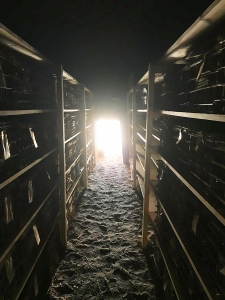
There is light at the end of the tunnel… The new shelves in the Horemheb storage room. Photo: Ali Jelene Scheers.
As you can probably tell by now, it requires a lot of administrative work to get the storage sorted out. With the eye on possible future research, we’re also inventorying the bone assemblages from the previous seasons so that we have a clear image of what is stored where. We’ve been building shelves in the storage rooms and the crates that aren’t in tiptop shape have been replaced. It’s time-consuming and not really glamorous work, but it’s also part of an archaeological excavation.
Ali Jelene Scheers
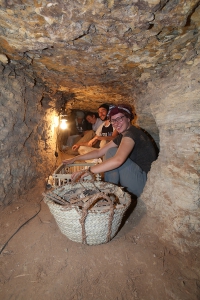
Re-crating the broken crates down in the subterranean complex of Meryneith. Corinna, Christian and Luca helped me with this mammoth task – without them I would be re-crating until next season. Photo: Paolo Del Vesco.
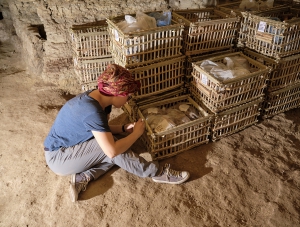
Inventorying the labels. Photo: Nicola Dell’Aquila.

45 years of excavation yield a lot of material. Photo: Ali Jelene Scheers.



